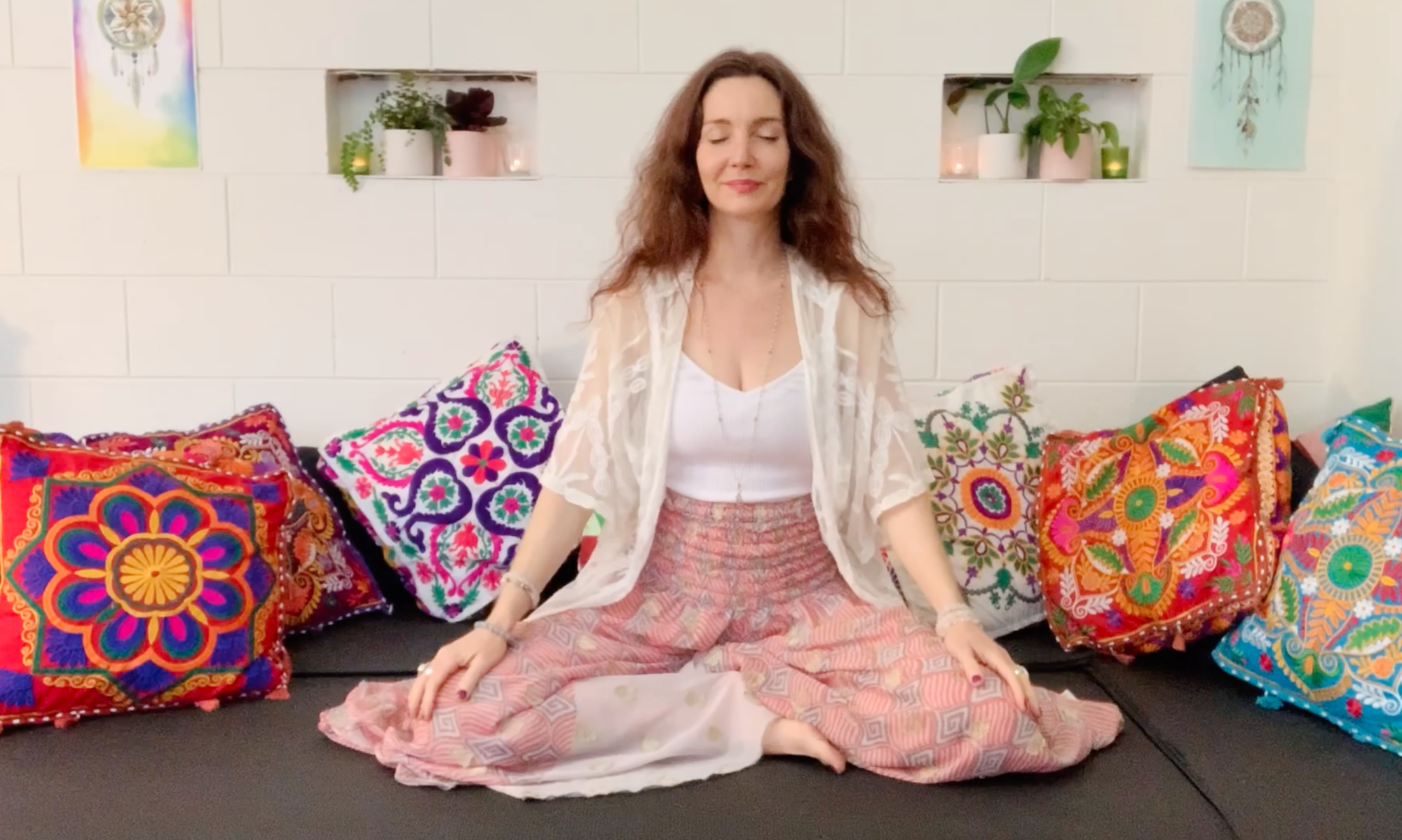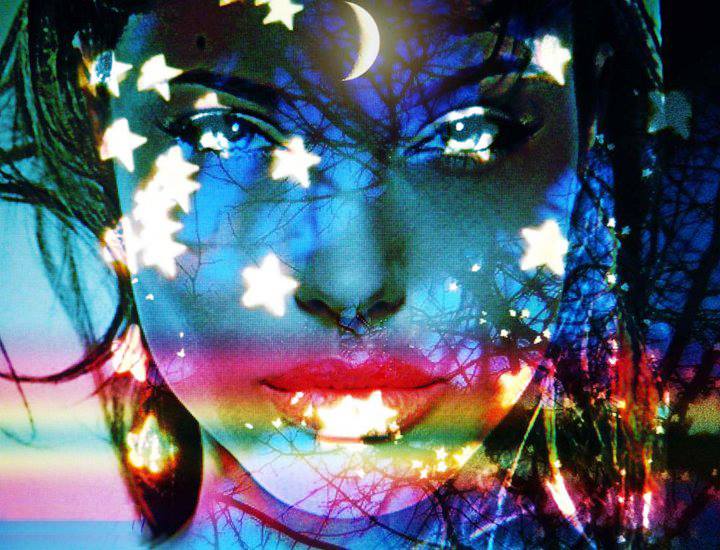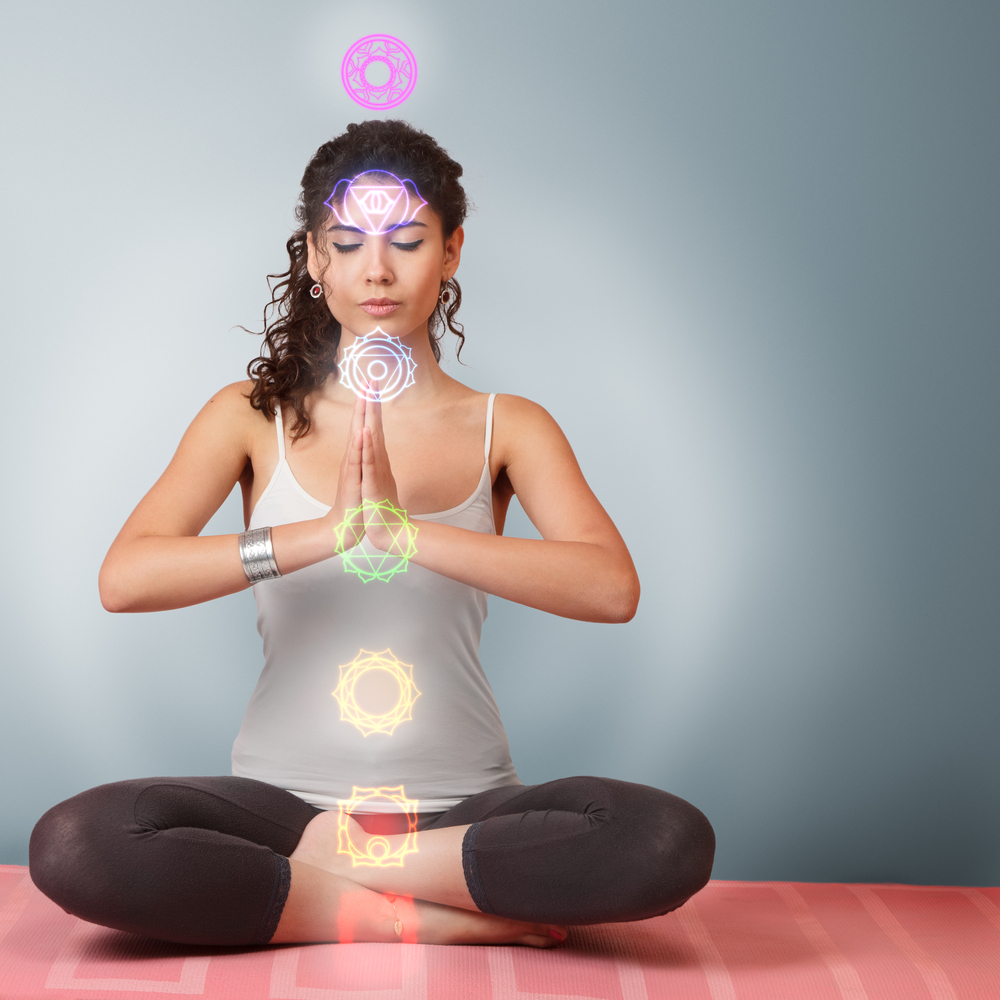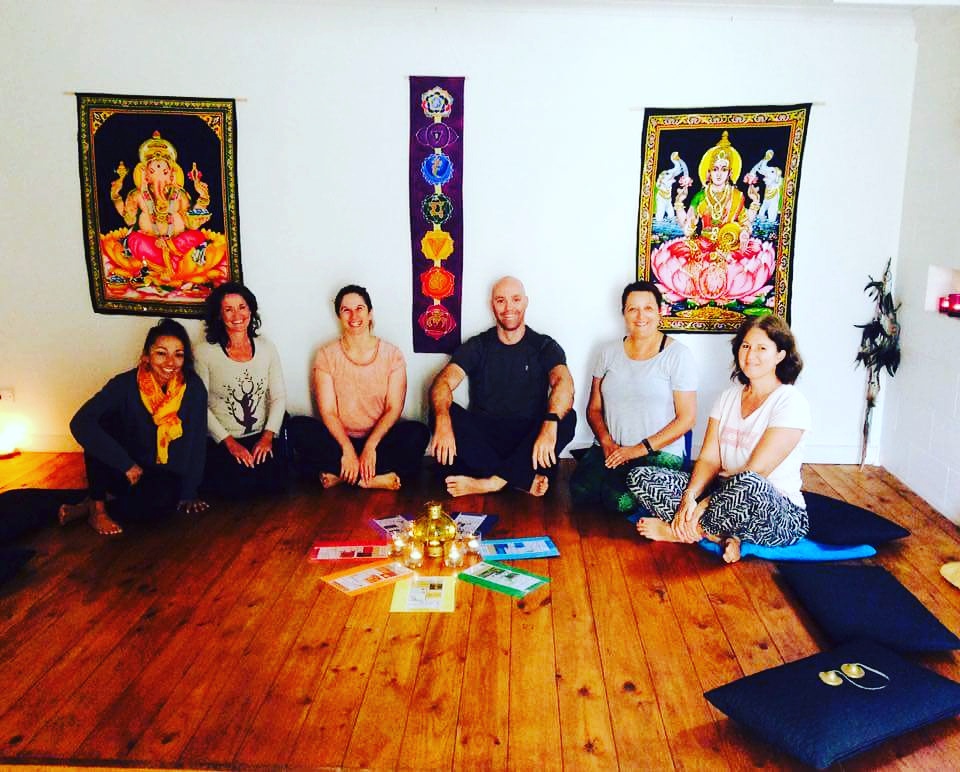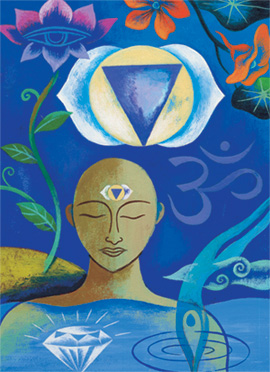
YONI MUDRA
Yoni represents the womb, the creative potential of existence. It is a classical meditation mudra and enhances creativity, receptivity, detachment and equanimity.
It helps you in redirecting your attention inward and brings spiritual calmness, balance and peace to the heart and mind.
The Yoni Mudra helps in quieting the mind. Practicing this helps your nervous system to be calmed and stabilized, allowing you to redirect your attention inward.
To perform yoni mudra, assume a comfortable posture, like seated cross-legged, remembering to always keep your head and back straight and upright.
Bring the tips of the thumbs together pointing upward and the tips of the index fingers together and let them point downward.
You can either interlace the other fingers or turn the pinky, ring and middle fingers inwards so that the back of the fingers are touching. Find what is most comfortable for you, I like to interlace.
Hold the mudra in front of swadisthana, the sacral chakra, at your lower belly. Tuck in the chin, close the eyes and focus on the swadisthana and the mudra. Take slow, deep breaths.
You should remain in the mudra for at least five minutes.
WHAT THE FINGER PLACEMENTS REPRESENT
Yoni Mudra helps to cultivate creative energy and detachment from the chaos of the outer world.
The downward-pointing triangle shape that this mudra makes between the hands is the symbol of Shakti as the manifesting current of energy. It enhances apana vayu, the downward grounding wind.
The practice of Yoni Mudra where the fingers are touching each other is said to bring balance within the body in relation to prana. The two most important nadis – ida and pingala are said to work in harmony encouraging balance.
Use this mudra anytime you need to detach from daily life, anchor yourself, and plug in to your infinite feminine creative power.
MUDRA PRACTICE
Although mudras show immediate effects, most need time 30-45 minutes (this can be spread throughout the day) over an extended period of time.
I recommend using this mudra in a meditation practice, either 30 minutes, two lots of 20 minutes or five rounds of 5 minutes across the day. You can practise mudras sitting, standing, lying down, walking. Almost anywhere really.
This mudra is best practiced sitting. I suggest trying at least 5 minutes in meditation and then you can bring the mudra in to other parts of your day, sitting at your desk.
BENEFITS
• Promotes flow of energy
• Calms the mind
• Alleviates stress
• Promotes mental clarity
• Strengthens the nervous system
Yoni mudra is an excellent practice to be combined with meditation as it blocks distractions of all sorts.
The Yoni Mudra is dedicated to the feminine power Shakti. ‘Yoni’ means ‘womb’. Hence the practice of Yoni Mudra brings strength and power like the feminine Shakti (power).
This mudra is equally relevant for all genders as it works on the metaphysical level with the archetype of the womb and the creative force of Shakti.
In Indian Vedic and yogic philosophy the creative energy that manifests all life is the feminine power of Shakti. The origin of all life, of Shakti, is the great unmanifested cosmic womb, known in Sanskrit as Hiranyagarbha.
Yoni Mudra is sometimes referred to as Feminine Adi Shakti Primal Power Mudra. Given below are some of the important benefits that are derived when one practices Yoni Mudra.
1. Connection to the Earth: The practice of Yoni Mudra teaches one to go back to where one started – the earth – the birth. Bringing a sense of connection to where we belong. It is done on a very spiritual level.
2. Female Energy: The practice of Yoni Mudra helps women to connect to the innate female energy. The main source of life creation embedded deep in the womb.
3. Balance in the energy: The practice of Yoni Mudra where the fingers are touching each other is said to bring balance within the body in relation to prana. The two most important nadis – ida and pingala are said to work in harmony encouraging balance.
4. Fertility in women improves: With the practice of Yoni Mudra when done regularly for good duration, is said to help women finding difficulties with infertility. Helps women gain the energy back into their bodies to help improve fertility.
5. Women during menopause: The practice of Yoni Mudra is also good for women fighting symptoms related to menopause due to hormonal imbalance. This practice helps to bring this balance the right way, making menopause smooth.
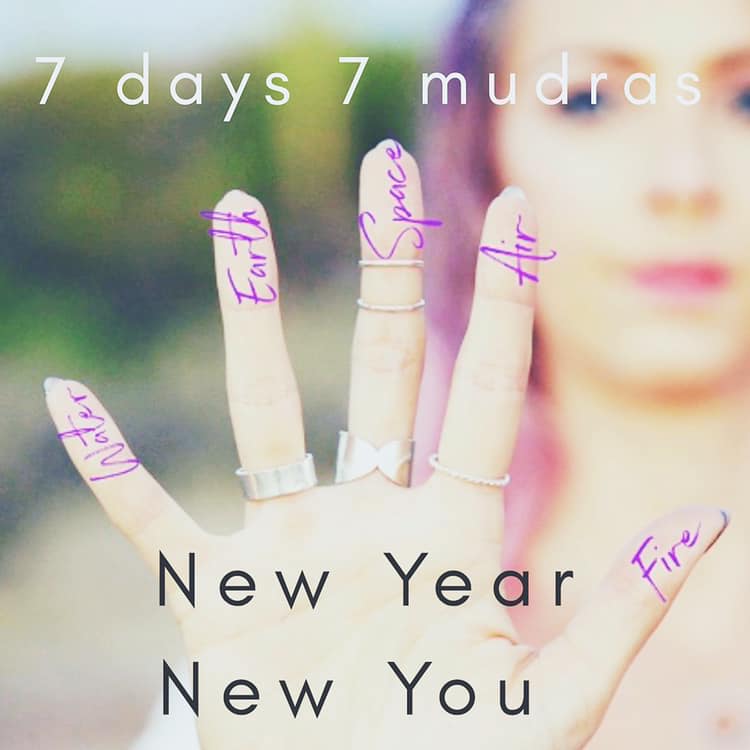
WHAT ARE MUDRAS AND WHY ARE THEY POWERFUL?
In Sanskrit, mudra means “seal”, “mark” or “gesture.” Mudras are gestures (often of the hands but in Sattva Yoga we also use mudras of the eyes and tongue, and other body techniques).
Mudras act as psychic energy seals that create energetic shifts in the mental, physical and energetic body through guiding the energetic flow and harnesssing the bodily reflex stimulus to the brain.
The tips of your fingers, crown of your head, and feet are where energy leaves your body. You can practice mudras to channel that energy back into your body.
THE ELEMENTS OF THE HAND
The hand has three gunas, or qualities, and every finger has its own energy and its own elements.
In yogic philosophy the three gunas, fundamental forces, are tamas, rajas, and sattva. They interact to create all of the known Universe (Prakriti), and can be increased or decreased by using mudras.
Sattva manifests as balance, inspiration, and knowledge of what is real. Tamas is a heavy, mindless energy that causes ignorance and inaction. Rajas is the energy of change, manifesting as passion, pain, desire, and effort, and it can lead you to sattva or tamas but is often characterized as attachment to outcomes and unsteadiness.
Your hand has each of these three guna characteristics, and each finger is associated with an element.
Thumb Divine activator, Agni (Fire), Manipura chakra
Index Finger Individual Soul (Jiva), Vaayu (Air), Anahata chakra
Middle Finger Sattva Guna (Purity/Light), Akasha (Ether/Space), Vissuddha chakra
Ring Finger Rajas Guna (Passion/Fire) Prithvi (Earth), Muladhara chakra
Little Finger Tamas Guna (Inertia/Darkness) Jal (Water), Swadisthana chakra
A MUDRA FOR EVERYTHING
You can use mudras to increase, decrease or stabilise the gunas and specific elements. Whatever you need in your life, there is a mudra for it!
Some mudras show immediate effects, yet most need time 30-45 minutes (can be spread throughout the day) over an extended period of time.
You may notice some of the names I use are different from what you may be used to. My teacher comes from the Himalayan yoga tradition and so I use the names as he teaches them. Teachers from other traditions may used varied terminology.
NEW YEAR NEW YOU
Why a new you? There’s nothing wrong with the ‘old you’ but the only real constant in life is change. So you can make this change conscious, harnessing intention and practice to steer change in an evolutionary direction, or you can just be at the mercy of old, unconscious behavioural patterns and programming.
New Year is a wonderful time to set the intention of renewal. But really our cells are renewing constantly so we can renew our body anytime.
Mudras are a powerful component of Sattva Yoga as well as a technology you can use on their own.
Over the next 7 days I am going to share my favourite mudras with you. And talk about how mudras work and what they can do for you.
I recommend trying each mudra for a day and at the end of the 7 days, if you feel inspired, choosing a mudra to practice with daily for a 21 day meditation practice or sadhana.
Drop me a comment and let me know how you go. I love hearing stories of the effects of these subtle but powerful practices.
Hari om tat sat. Namaste. Blessings.
Christina at Raw Mojo
ॐ
Check out upcoming Sattva Yoga and Chakradance classes here
